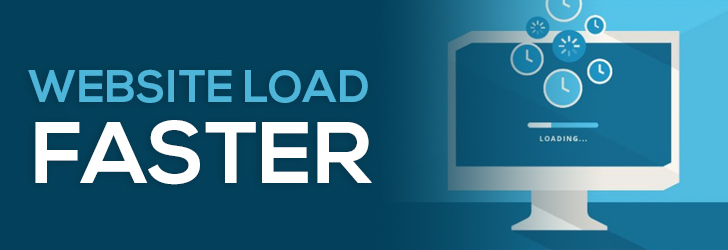
Slow websites not only hurt your search engine rankings but also lead visitors to leave your website and decrease visitor engagement and conversions. A couple of extra seconds to load a webpage has a huge "negative" impact on bounce rate, page views, and customer satisfaction. This is especially true for eCommerce websites where conversion is of utmost importance. Nearly 50% of the visitors expect a webpage to load in less than 2 seconds, and the vast majority will exit out of the page if the load time exceeds 3 or more seconds.
The following are the disadvantages of having slow websites:
- Hurt your search engine ranking - negative effect on Search Engine Optimization (SEO).
- Customer dissatisfaction.
- Low customer engagement, conversions, and page views.
- Higher bounce rate - steer visitors away from your website before they even arrive.
- Prevent visitors from returning to your site in the future.
- Lose site reputation and loyalty.
In addition to performance optimization, maintaining a mobile-friendly website is very important in ranking well on Google. Mobile traffic now exceeds desktop traffic, and optimizing websites for mobile devices plays an important role in SEO efforts. Google uses mobile-first indexing to rank websites on its SERP (Search Engine Result Pages).
How fast do you want to be?
Depending on the platform and complexity of the website, load time may vary. If you have a very simple website with mostly static content, you can build a website that loads in less than 1 second. However, eCommerce websites and other open-source websites with a long list of features can load much longer than 2 seconds. For example, a WordPress or a Magento website with many third-party plugins may load in 3 or more seconds. According to Google, you want your website to load in no more than 3 seconds. Anything beyond 3 seconds will hurt your website and will require performance optimization.
There are several speed test tools you can use to determine if your website is slow. Google PageSpeed, GTmetrix and Pingdom are among the popular tools help you understand underlying reasons why your website may be slow. Please be sure to examine both mobile and desktop characteristics for a complete view of your site speed.
How do you optimize your site to load faster?
Optimizing the site to load faster is not an easy task, but there are external resources you can use to improve your site performance in addition to improving your website itself. The following are ways to optimize your site for improved performance.
- Use CDN (Content Delivery Network) - There are a handful number of public servers offering standard CSS, JS, and Other static resources and by using them it offloads your server resources and utilizes the browser cache to load commonly used resources faster.
- Cache - Utilize the browser cache or reverse proxy cache.
- Minify CSS and JS. By minifying CSS and JS, it takes less time to transmit and process data.
- Enable Compression - You may use Gzip and Brotli compression to reduce the file size of CSS, JS, and HTML and save transmission time.
- Move render-blocking JS to the bottom of the page.
- Optimize Images by reducing color depth, resizing, and converting a file type (PNG, JPG, GIF vs Webp). Images on the user's computer of smartphone screens don't need to be 4K with millions of colors. Reducing the size of the image, and 256 colors will significantly reduce file size.
- Configure Expire Headers and HTTP Response headers to utilize the browser cache and Keep-Alive connections.
- Implement lazy-loading images - Images blow the viewport can be loaded lazy and improve user experience.
- Disable unnecessary plug-ins. If you're using an open-source platform such as WordPress, Magento, or Drupal, you can disable plug-ins that you don't use. By disabling unused plugins, you can improve site performance and security.
Conclusion
Website load time plays an important role in SEO, customer satisfaction, and user engagement. Slow websites deter conversions frustrate the visitors from utilizing your website and hurt your ROI on the traffic you acquired from advertisements. You may use external resources such as the CDN and Reverse Proxy to utilize caching, and also improve your website by implementing optimization steps provided above. Even though Google suggests a 3-second load time, your goal should be under 2 seconds to achieve a better user experience.
Share this post
Leave a comment
All comments are moderated. Spammy and bot submitted comments are deleted. Please submit the comments that are helpful to others, and we'll approve your comments. A comment that includes outbound link will only be approved if the content is relevant to the topic, and has some value to our readers.

Comments (0)
No comment